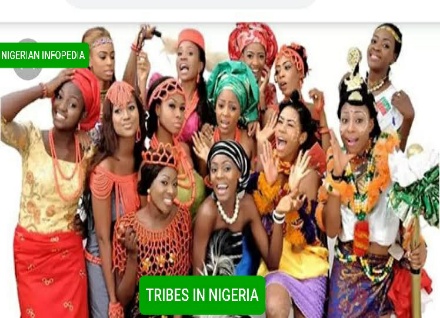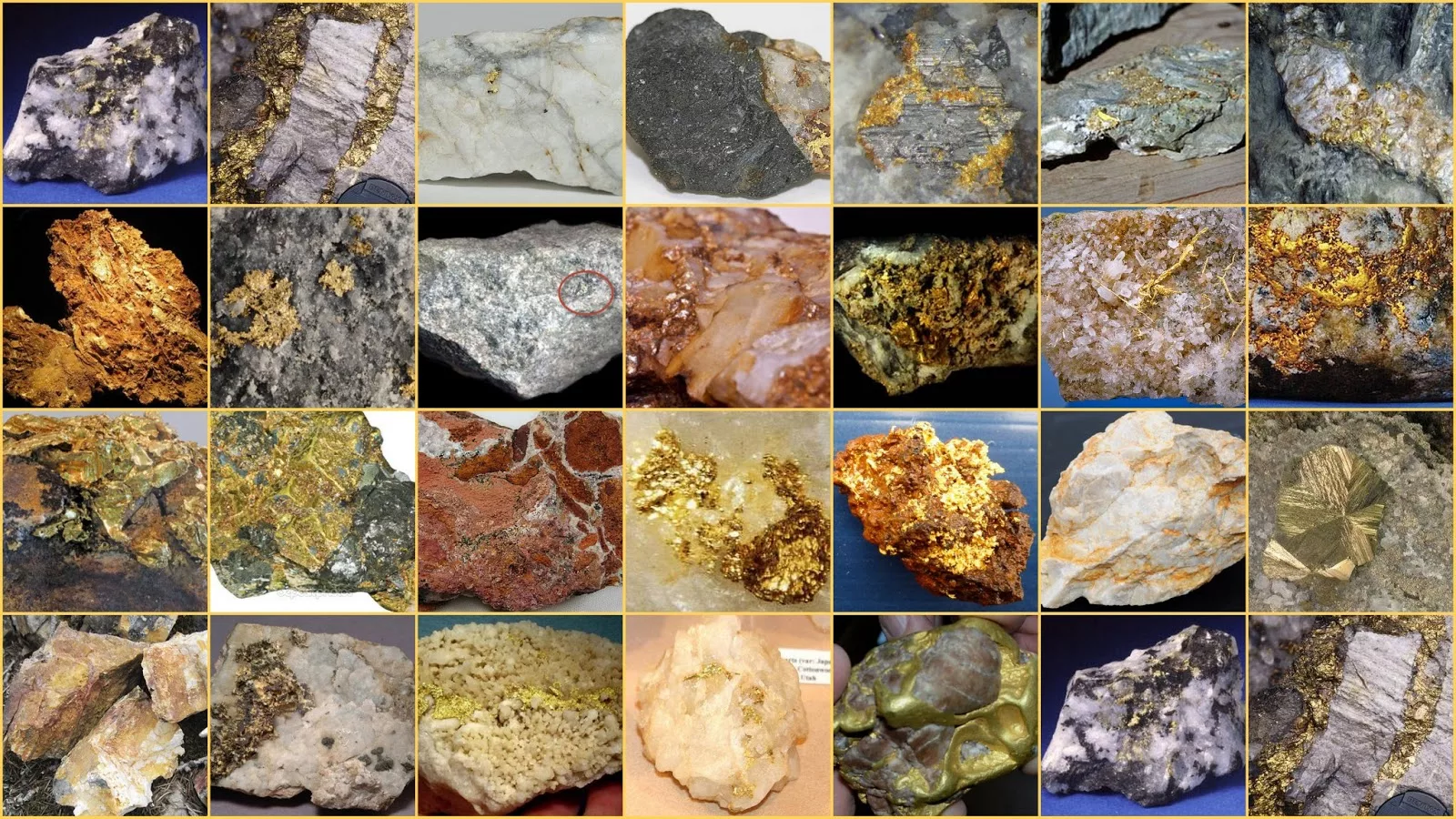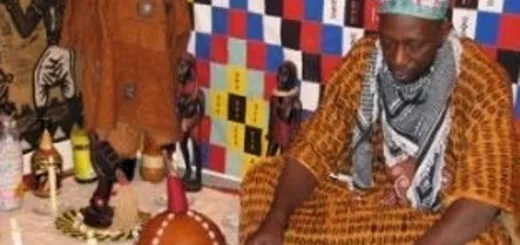Top 10 Poorest Tribes in Nigeria (2026)
Nigeria is home to a diverse range of indigenous tribes. Unfortunately, many of these tribes are struggling to overcome poverty and socio-economic challenges. In this article, we will take a closer look at the top 10 poorest tribes in Nigeria in 2026. We will examine the factors contributing to their impoverished state and the challenges they face in improving their living conditions.

It is no secret that poverty is a widespread issue in Nigeria. Despite being one of the largest economies in Africa, poverty remains a significant problem. The poorest tribes in Nigeria are particularly vulnerable to the effects of poverty. These indigenous communities face numerous challenges in accessing basic resources and services.
Through detailed analysis, we will shed light on the poverty levels among indigenous tribes in Nigeria, emphasizing the need for collaborative efforts to address this issue. This article aims to provide a comprehensive understanding of the impoverished state of these tribes and the struggle they face in improving their socio-economic conditions.
Poverty is a major problem in Nigeria, with over 80 million people living below the poverty line. While all Nigerians are affected by poverty, some tribes are more vulnerable than others. This blog post will list the top 10 poorest tribes in Nigeria, based on data from the National Bureau of Statistics.
TOP 10 POOREST TRIBES IN NIGERIA (2026)
In no particular order, below are Nigeria’s poorest tribes this 2023.
THE EZZA TRIBE
The Ezza tribe is an Igbo subgroup that is found mainly in Ebonyi State. The Ezza people are predominantly farmers, but their land is not very fertile. This has made it difficult for them to generate enough income to support their families.
THE OGONI TRIBE
The Ogoni tribe is found mainly in Rivers State. The Ogoni people have been devastated by oil pollution and their land has been rendered infertile. This has made it difficult for them to farm or engage in other economic activities.
THE IJAW TRIBE
The Ijaw tribe is found mainly in the Niger Delta region. The Ijaw people have been affected by oil pollution and conflict. This has made it difficult for them to develop their economy.
THE KANURI TRIBE
The Kanuri tribe is found mainly in Borno State. The Kanuri people have been affected by the Boko Haram insurgency. This has displaced many Kanuri people and destroyed their homes and businesses.
THE FULANI TRIBE
The Fulani tribe is found all over Nigeria. The Fulani people are predominantly nomadic herders. However, climate change and desertification have made it difficult for the Fulani people to find grazing land for their livestock.
THE HAUSA TRIBE
The Hausa tribe is the largest tribe in Nigeria. They are located in the northern states. However, the Hausa people are also some of the poorest in Nigeria. This is due to a number of factors, including poor education, lack of access to healthcare, and unemployment.
THE IGBO TRIBE
The Igbo tribe is one of the three major tribes in Nigeria. The Igbo people are traditionally traders and entrepreneurs. However, the Igbo people have also been affected by poverty, even though they are the richest tribe in Nigeria. This is due to a number of factors, including the Nigerian Civil War and the collapse of the oil industry.
THE YORUBA TRIBE
The Yoruba tribe is one of the three major tribes in Nigeria. The Yoruba people are traditionally farmers and craftsmen. However, the Yoruba people have also been affected by poverty. This is due to a number of factors, including urbanization and the decline of agriculture. Lagos state, which is located in the Yoruba region is also among the richest states in Nigeria, but they also have poor people living within the state.
THE TIV TRIBE
The Tiv tribe is found mainly in Benue State. The Tiv people are predominantly farmers. However, the Tiv people have been affected by conflict and poverty.
THE IBIBIO TRIBE
The Ibibio tribe is found mainly in Akwa Ibom State. The Ibibio people are predominantly farmers and fishermen. However, the Ibibio people have been affected by poverty and unemployment.
ECONOMIC CHALLENGES FACED BY NIGERIAN TRIBES
Nigeria is a country with significant economic challenges, and tribal communities are among the most affected by these issues. Economic growth has been slow and uneven, with socio-economic inequality remaining a significant challenge.
The Nigerian economy faces numerous challenges, including low levels of investment, inadequate infrastructure, and a lack of skilled labor. These factors have contributed to low levels of economic growth and high levels of poverty, particularly among marginalized communities.
Additionally, corruption remains a significant issue in Nigeria, and this has impacted economic development and benefitted only a few individuals and groups. As a result, many communities, including tribes, struggle to access the resources needed for economic development, such as funding for businesses and infrastructure projects.
Nigeria also faces significant socio-economic inequality, which remains a barrier to economic development. The country has a high level of income inequality, with a small percentage of the population controlling a significant portion of the country’s wealth. This has perpetuated poverty among marginalized communities, including tribal communities.
The lack of access to basic services and resources such as education, healthcare, and clean water has also contributed to socio-economic inequality in Nigeria. This disproportionately affects tribes, who often live in isolated and underdeveloped regions with limited access to essential services.
To address the economic challenges faced by Nigerian tribes, concerted efforts are needed to improve infrastructure and access to resources, and to address socio-economic inequality. Policies and programs focused on inclusive growth and the development of marginalized communities are crucial to achieving sustainable economic development in Nigeria.
LIVING CONDITIONS IN NIGERIAN TRIBES
Nigerian tribes face dire living conditions due to various factors that contribute to poverty in these indigenous communities. Impoverished communities in Nigeria are mostly deprived of basic necessities such as clean water, electricity, healthcare, and education. These factors lead to a vicious cycle of poverty, making it difficult for these tribes to break free from their impoverished conditions.
IMPACT OF LACK OF CLEAN WATER
Access to clean water is a fundamental human right, however, many Nigerian tribes lack access to clean water sources. This leads to water-borne diseases such as cholera and diarrhea, making it difficult for people to maintain their health and wellbeing. Lack of clean water also affects agriculture and food production, further contributing to poverty in these communities.
LACK OF ACCESS TO HEALTHCARE
Healthcare is another major challenge faced by Nigerian tribes. Many tribes lack access to basic healthcare services, making it difficult to address common ailments and diseases. This results in a high mortality rate among these communities, especially among children and pregnant women.
LACK OF ELECTRICITY
Access to electricity is essential for economic development and social wellbeing. However, many Nigerian tribes lack access to reliable electricity, making it difficult for them to carry out basic activities such as studying after dark or running small businesses. This lack of electricity also affects healthcare facilities, as they struggle to provide basic services under inadequate lighting conditions.
LACK OF EDUCATION
Education is a vital tool for breaking the cycle of poverty and improving living conditions. However, many Nigerian tribes lack access to education, with limited schools and teachers available. This leads to uneducated populations that are unable to participate in the workforce and improve their socio-economic conditions.
POVERTY ALLEVIATION EFFORTS IN NIGERIA
Nigeria has implemented a variety of poverty alleviation programs, including initiatives specifically targeted towards tribal development. The government and non-governmental organizations have recognized the need to uplift impoverished communities, particularly those in remote and rural areas.
THE NATIONAL POVERTY ERADICATION PROGRAMME (NAPEP)
NAPEP was established by the Nigerian government in 2001 to address poverty in rural areas. The program provides financial assistance, training, and materials to individuals and communities in order to promote economic development and self-reliance. NAPEP aims to enhance the capacity of Nigerians to generate income and create employment opportunities. However, the program has been criticized for its lack of effectiveness and impact.
THE NATIONAL DIRECTORATE OF EMPLOYMENT (NDE)
The NDE was established in 1986 to combat unemployment in Nigeria. The program provides training and financial support for small businesses and encourages entrepreneurship. NDE has implemented several initiatives aimed at supporting tribal development, such as the Sustainable Agricultural Development Training Scheme and the Rural Employment Promotion Programme.
THE MILLENNIUM DEVELOPMENT GOALS (MDGS)
The MDGs were a set of eight goals established by the United Nations in 2000 to address global poverty. Nigeria adopted the MDGs and implemented several poverty reduction programs, including efforts to increase access to education and healthcare. However, Nigeria was unable to achieve all of the MDGs by the 2015 target date.
THE YOUTH EMPLOYMENT AND SOCIAL SUPPORT OPERATION (YESSO)
YESSO is a World Bank-supported program aimed at providing social assistance and employment opportunities for youth in Nigeria. The program targets marginalized communities and aims to improve their socio-economic conditions through skills training and job placement. YESSO has been successful in providing financial assistance to vulnerable households and empowering youth.
THE COMMUNITY DEVELOPMENT PROGRAMME (CDP)
The CDP was established by the Nigerian government in 2004 to address poverty at the community level. The program provides financial assistance and technical support for community-based projects and aims to promote development in remote and underserved areas. The CDP has implemented several initiatives aimed at improving tribal development, such as the Rural Infrastructure Development Scheme and the Rural Women Empowerment Programme.
While these poverty alleviation programs have made progress in addressing poverty in Nigeria, more needs to be done to improve the socio-economic conditions of tribal communities. Targeted support and resources are needed to ensure the success of these programs and uplift the most marginalized populations in Nigeria.
POVERTY LEVELS AMONG NIGERIAN TRIBES
Nigeria is home to numerous tribes, and unfortunately, many of these communities are living below the poverty line. The poverty levels among Nigerian tribes vary, with some tribes being more poverty-stricken than others.
The lowest income tribes in Nigeria are mostly located in rural areas and have limited access to basic amenities, such as clean water, healthcare, and education. These tribes also face various economic challenges, including a lack of employment opportunities, high levels of inflation, and inadequate infrastructure.
One such tribe is the Fulani tribe, which is considered one of the poorest tribes in Nigeria. The Fulani tribe is mainly pastoral, and their livelihoods are dependent on their livestock. However, their traditional way of life is facing increasing challenges due to climate change, which is affecting their access to water and grazing lands.
Another poverty-stricken tribe in Nigeria is the Kanuri tribe. The Kanuri tribe is mainly concentrated in the northeastern part of Nigeria, which has been plagued by insurgency and violence. This has led to the displacement of thousands of people, including members of the Kanuri tribe, and has greatly impacted their socio-economic wellbeing.
The Tiv tribe is also among the lowest income tribes in Nigeria. The Tiv tribe is an agrarian community that relies on farming for their livelihoods. However, their agricultural activities are being threatened by land disputes and environmental degradation, which has contributed to their poverty levels.
Other tribes in Nigeria that are among the poorest include the Edo, Igala, and Ijaw tribes. Despite the efforts of the government and various non-governmental organizations to address poverty in Nigerian tribes, the poverty levels remain high, and more needs to be done to alleviate their conditions.
CONCLUSION
In conclusion, poverty remains a pressing issue among Nigerian tribes, with many facing significant economic and social challenges. From the top 10 poorest tribes in Nigeria to the underprivileged and struggling communities, these tribes are faced with a range of obstacles to achieving economic development and improving their living conditions.
While poverty alleviation efforts have been implemented by the government and non-governmental organizations, there is a need for greater investment and targeted support to address the inequalities faced by these marginalized groups.
Furthermore, the impact of socio-economic inequality on Nigerian tribes cannot be ignored. It hinders their ability to access opportunities and resources needed to improve their livelihoods.
As such, it is important for stakeholders to prioritize inclusive policies and programs that empower these communities and provide them with the tools needed to break the cycle of poverty.
Although the challenges are significant, there is hope for change. By working together, Nigerian tribes can overcome their economic struggles and achieve greater prosperity and well-being for themselves and future generations.

